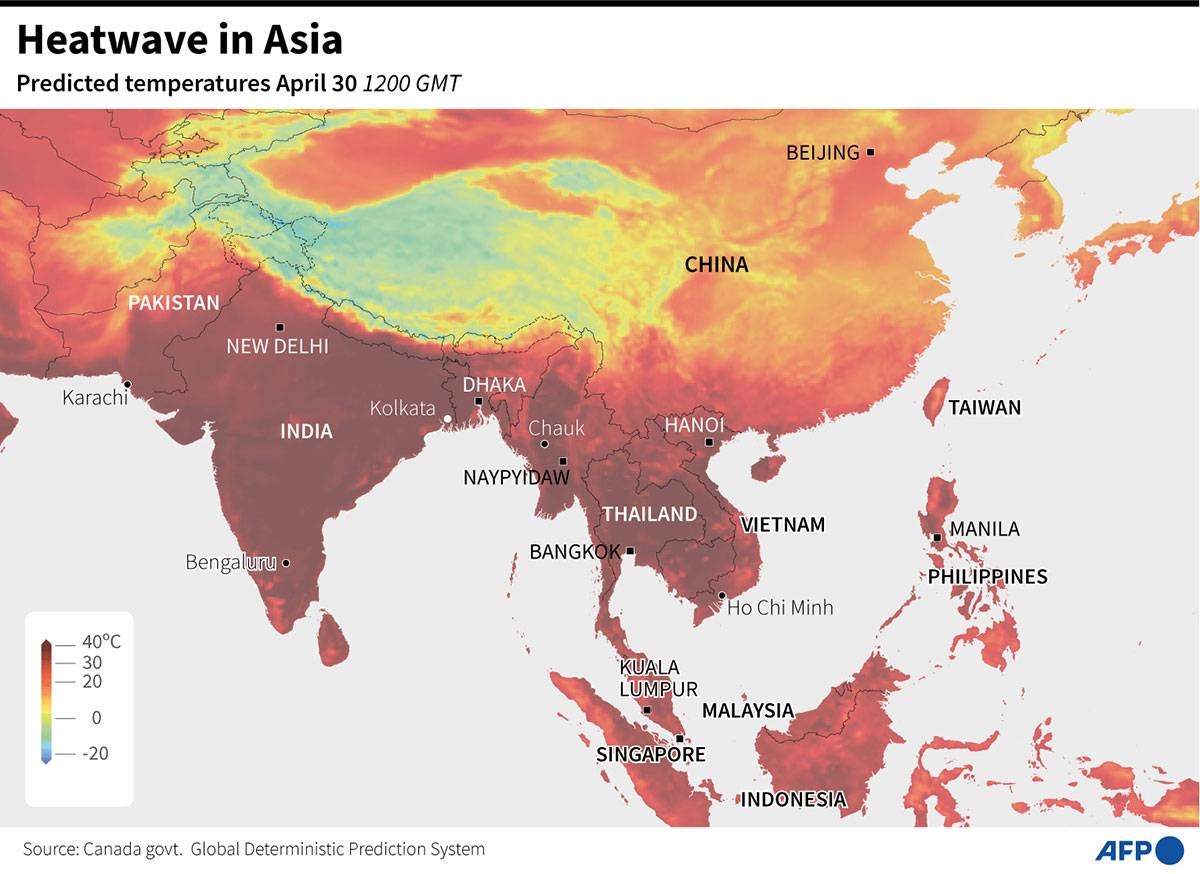Bangkok: Asia’s Sweltering Heatwave and its Devastating Impacts
Large swaths of Asia are currently enduring a heatwave of unprecedented proportions. From Myanmar to the Philippines, temperature records are being shattered, leaving millions of children unable to attend school. This extreme heat, which scientists warn will only become more frequent and intense due to human-induced climate change, has raised numerous questions. In this article, we will explore the causes of this heatwave, its effects on various populations, and the response of governments in the affected regions.
The Causes Behind the Intense Heat
The months leading up to the monsoon season in South and Southeast Asia are typically hot. However, this year, temperatures have soared well above average in many countries. Experts attribute this to climate change, which has led to more frequent and intense heatwaves. In fact, Asia is warming at a faster rate than the global average, according to the World Meteorological Organization. Additionally, the El Niño weather phenomenon is playing a role this year, further exacerbating the heat. Milton Speer, a meteorologist and visiting research fellow at the University of Technology Sydney, explains that during El Niño, the lack of clouds results in higher average temperatures. Furthermore, sea surface temperatures in the region are significantly above normal, contributing to higher overnight temperatures inland. Other factors, such as deforestation and the urban heat island effect, also contribute to the severity of the heatwave.
The Disproportionate Impact on Vulnerable Populations
Extreme heat disproportionately affects certain segments of the population, including children, the elderly, and those living in poverty. Children, especially those with pre-existing conditions or disabilities, are more susceptible to heat-related illnesses. The UN Children’s Agency, UNICEF, has warned that 243 million children across the Pacific and East Asia are at risk from heatwaves. Heat stress can lead to severe health issues such as cardiovascular diseases, organ failure, and muscle and nerve dysfunction. The elderly and individuals living in poverty often lack access to cooling solutions at home or are forced to work in conditions without adequate heat protection. The consequences of this heatwave are dire and can have long-lasting effects on the health and well-being of these vulnerable populations.
Government Responses and the Way Forward
Authorities in several countries have taken measures to mitigate the impact of the heatwave. Citizens have been advised to stay at home, and hospitals in Nepal have been put on standby. In Cambodia, public schools were asked to keep doors and windows open for ventilation. However, in Bangladesh and the Philippines, the response has been more drastic, with schools being closed for several days. While these measures aim to protect the population, there are concerns about children lacking access to cooler conditions at home and being left unsupervised due to parents’ work obligations. The interruption of education caused by these extreme weather events also poses a significant challenge.
The duration of the heatwave remains uncertain. In Bangladesh, temperatures are not expected to recede until Thursday at the earliest. In Thailand, forecasters have warned that the annual rains may arrive several weeks later than normal. Even when the monsoon season arrives, the overall warming trend will continue. Heatwaves will persist, and it is crucial for governments and communities to develop long-term strategies to adapt to these changing climatic conditions.
The current heatwave in Asia serves as a stark reminder of the urgent need to address climate change. As temperatures continue to rise and extreme weather events become more frequent, it is crucial for governments, communities, and individuals to take action to mitigate the impacts and build resilience. This includes reducing greenhouse gas emissions, investing in sustainable infrastructure, and implementing policies that protect vulnerable populations. Only through collective efforts can we hope to minimize the devastating consequences of heatwaves and ensure a sustainable future for all.
Source: The Manila Times








